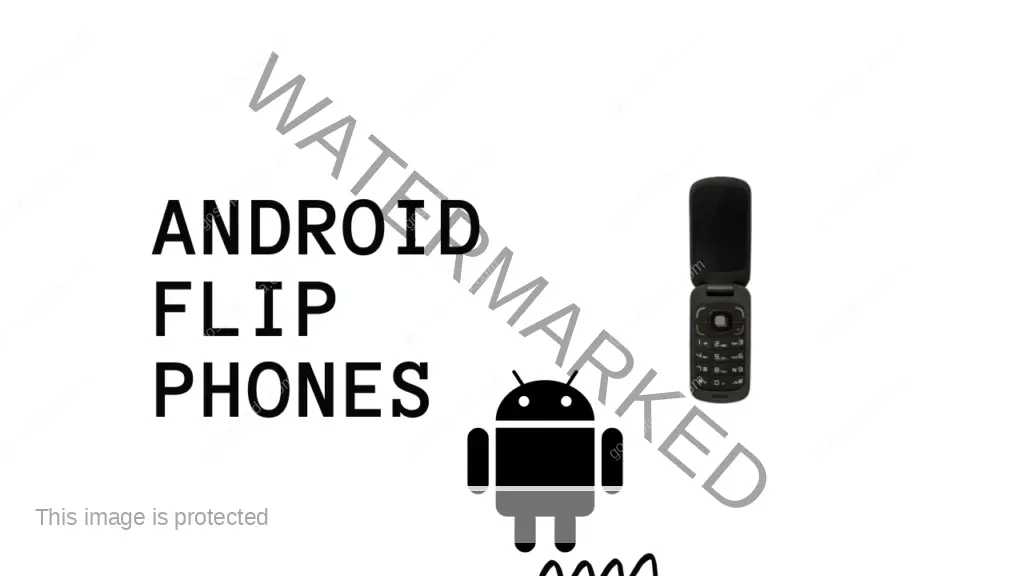Do you keep encountering the frustrating error 404 on your Android device? Fear not, you’re not alone! This common issue has been faced by countless Android users worldwide. Today, we’ll delve into why this problem occurs and more importantly, how to fix error 404 on Android devices.
What is Error 404 on Android?
Before we delve into how to tackle this issue, let’s first understand what exactly a 404 error is. Typically seen while browsing the internet, this error message indicates that the webpage you’re trying to access doesn’t exist. It’s a client-side error, meaning the problem generally lies with your device or internet connection.

Why Does Error 404 Occur?
Now that we know what a 404 error is, the next question is – why does it occur? There can be multiple reasons behind this:
- Broken Links: Links that once led to a webpage but no longer do are referred to as broken links. They often lead to 404 errors.
- URL Mistakes: Incorrectly typed URLs can lead to this error, especially if the mistyped URL doesn’t exist.
- Deleted Webpages: If a webpage has been removed or relocated without proper redirection, it might lead to a 404 error.
- Server Issues: Occasionally, issues with the server hosting the webpage could result in this error.
Understanding these causes can be the first step in solving the “how to fix error 404 on Android” conundrum!
How to Fix Error 404 on Android?
Here, we provide the step-by-step solutions to rectify this error on your Android device.
Fix 1: Clear Your Browser Cache
Browser cache sometimes stores outdated or incorrect versions of webpages, leading to a 404 error. Here are the detailed steps on how to clear your browser cache on Android:
- Open Your Browser: The first step is to open your browser. This might be Google Chrome, Mozilla Firefox, or any other browser you use on your Android device.
- Go to Settings: Once you’ve opened the browser, tap on the three dots (or lines) usually located at the top right corner of your screen. This will open a dropdown menu. Select ‘Settings’ from this menu.
- Access the Privacy Section: Within the ‘Settings’ menu, locate and tap on ‘Privacy’. In some browsers, this may be listed as ‘Privacy & Security’.
- Clear Browsing Data: Under the ‘Privacy’ section, you’ll see an option to ‘Clear Browsing Data’ or something similar. Tap on this.
- Select Cached Files: You’ll now be presented with a list of data types you can clear. Ensure that ‘Cached Files and Images’ (or a similar option) is selected.
- Clear Data: Finally, tap on ‘Clear Data’ or ‘Clear Browsing Data’ at the bottom of the screen.
By following these steps, you should be able to clear your browser cache effectively. After doing so, retry accessing the webpage that was previously showing the 404 error.
Remember, each browser might have slightly different terms or layout, but the basic process remains the same. Clearing the cache is an important step in the process of how to fix error 404 on Android. If the error persists, move on to the next solution.
Fix 2: Check Your Internet Connection
Surprisingly, a poor or unstable internet connection can often lead to a 404 error. This can happen when your device struggles to communicate with the website’s server. Here’s how to troubleshoot your internet connection:
- Turn Off Data or Wi-Fi: The first step is to disconnect your device from the internet. If you’re using mobile data, switch it off. If you’re using Wi-Fi, turn it off as well.
- Wait for a Few Moments: Give it a minute or two. This short break allows your device’s network adapter to reset.
- Reconnect to the Internet: Turn your Wi-Fi or mobile data back on. Your device should automatically reconnect to the internet.
- Try a Different Network: If the error still appears, try switching to a different network. For instance, if you were using mobile data, switch to Wi-Fi, or vice versa.
This simple act of disconnecting and reconnecting to the internet can often solve the problem. If you’ve followed the steps and the 404 error still persists, it’s time to move to the next solution.
Remember, a strong and stable internet connection is not only essential for avoiding 404 errors but also for a smooth overall browsing experience. Understanding how to troubleshoot your internet is a key step in resolving the “how to fix error 404 on Android” issue.
Fix 3: Update Your Browser
An outdated browser might be incompatible with some websites, causing a 404 error. Keeping your browser updated ensures that you’re equipped with the latest features and security patches, leading to a smoother browsing experience. Here’s how you can update your browser on Android:
- Open Google Play Store: Go to the list of apps on your Android device and open the Google Play Store.
- Tap on the Menu Icon: On the top left corner of your screen, tap on the three horizontal lines to open a sidebar menu.
- Select ‘My Apps & Games’: From the menu, select the ‘My Apps & Games’ option. This will show you a list of apps installed on your device.
- Find Your Browser: Scroll through the list to find your browser. If there’s an update available, it will be indicated next to the app.
- Update the App: Tap on the ‘Update’ button next to your browser. If you don’t see this option, your browser is already updated to the latest version.
After updating your browser, try accessing the webpage that was previously giving the 404 error. If the error persists, consider trying the next solution.
Remember, keeping your apps updated is not just crucial for avoiding errors, but also for maintaining the security of your device. It’s an important step in the process of “how to fix error 404 on Android”. If you’ve tried all the solutions above and the error still persists, it might be worth reaching out to your service provider or the website owner.
Fix 4: Use a Different Browser
At times, the issue might not be with the webpage, but with the browser you’re using. Different browsers have different compatibilities, and some websites might not load correctly on certain browsers, leading to a 404 error. Here’s how you can switch to a different browser on Android:
- Download a New Browser: Go to the Google Play Store and search for a different browser. This could be Google Chrome, Mozilla Firefox, Microsoft Edge, or any other reliable browser of your choice.
- Install the Browser: Tap on the ‘Install’ button to download and install the new browser on your device.
- Open the New Browser: Once the browser is installed, open it and accept any terms and conditions or permissions, if asked.
- Enter the URL: Type in the URL of the webpage that was previously showing the 404 error.
By using a different browser, you’re essentially changing the way your device communicates with the website’s server. This might resolve any compatibility issues that were causing the 404 error.
Remember, using the right tools for the job, including the correct browser, is vital for a seamless internet experience. It’s an essential part of the “how to fix error 404 on Android” process. So, if a page isn’t loading on one browser, don’t hesitate to try it on another!
Fix 5: Restart Your Device
Last but not least, the age-old solution: turning it off and on again! Restarting your device can help to reset the software and clear any minor bugs or issues causing the 404 error. Here’s how to do it:
- Press the Power Button: Press and hold the power button on your device. This will bring up a menu with several options.
- Select Restart: From the options, select ‘Restart’ or ‘Reboot’, depending on your device. If neither option appears, select ‘Power off’, wait for a minute, and then power on your device again.
- Wait for the Device to Restart: Give your device some time to switch off and start back up again. Be patient during this process.
- Open Your Browser: Once your device has restarted, open your browser and navigate to the webpage that was previously showing the 404 error.
By following these simple steps, you could resolve any minor software glitches that might have been causing the error.
Remember, sometimes, the simplest solutions are the most effective. As part of the “how to fix error 404 on Android” process, restarting your device is a quick and easy method that could potentially resolve the issue. Keep this solution in your back pocket for future troubleshooting.
Read more: Apex Legends fs_checkasyncrequest returned error for model
Fix 6: Check with the Website
If you’ve tried all the above solutions and still find the pesky 404 error cropping up, the problem might lie with the website itself. Here are some steps to verify and potentially rectify this:
- Access the Website on Another Device: Try accessing the same webpage on a different device, like a computer or a different smartphone. If you get the same error, it’s likely a problem with the website, not your device.
- Check the Website’s Social Media: Some websites inform their users about technical issues on their social media platforms. Check their Twitter or Facebook pages for any updates.
- Contact the Website: If possible, find a way to contact the website or the webmaster. Explain the issue and ask if they’re aware of any problems on their end.
This step will confirm whether the 404 error is due to a problem with the website itself.
Remember, as part of the “how to fix error 404 on Android” process, identifying the root of the problem is crucial. If it’s an issue with the website, all you can do is notify them and wait for a resolution. Knowing when the problem is out of your hands can save you from unnecessary troubleshooting efforts.
Fix 7: Reset Your Browser Settings
If none of the aforementioned solutions work, you may need to reset your browser settings. This is a more drastic measure and should only be used if the 404 error persists across multiple websites. Here’s how to reset browser settings on Android:
- Open Your Browser: Start by opening the browser where you are experiencing the 404 error.
- Access the Settings Menu: Tap on the three-dot menu (usually at the top-right corner of your screen) and select ‘Settings’.
- Locate ‘Advanced Settings’: Scroll down until you find the ‘Advanced’ or ‘Advanced Settings’ option. Tap on it.
- Reset Settings: Look for the ‘Reset’ or ‘Restore Settings to their Original Defaults’ option. If prompted, confirm that you want to reset your settings.
Keep in mind that this will erase your browser’s history, saved passwords, and other customized settings. After performing this reset, try accessing the website that was previously displaying the 404 error.
Remember, this is a last-resort solution in the process of “how to fix error 404 on Android”. If you’ve exhausted all other options and the issue persists, resetting your browser settings might be your best bet.
Fix 8: Update Your Android System
Another possible solution to the 404 error might be updating your Android system. Operating systems are regularly updated to fix bugs, improve performance, and add new features. A system update could potentially resolve the error. Here’s how to update your Android system:
- Go to Your Device Settings: Open the ‘Settings’ app on your device. This is usually represented by a gear icon.
- Scroll to ‘About Phone’ or ‘System’: Depending on your device, you might see either ‘About Phone’ or ‘System’. Tap on it.
- Tap on ‘System Updates’ or ‘Software Update’: You’ll see an option that says ‘System Updates’ or ‘Software Update’. Tap on this to check for any available updates.
- Download and Install Updates: If there’s an update available, you’ll be given the option to download and install it. Make sure your device is connected to Wi-Fi and is sufficiently charged before proceeding with the update.
After updating your system, try accessing the webpage that was previously displaying the 404 error. Remember, staying updated is a key part of maintaining a well-functioning device and solving problems like “how to fix error 404 on Android”. Regular updates can not only resolve your current issues but also prevent future ones. Be sure to check for updates regularly to ensure a smooth Android experience.
Fix 9: Use a VPN
Sometimes, the 404 error might appear because the webpage you’re trying to access is blocked in your region. Using a Virtual Private Network (VPN) can help you bypass these geographical restrictions. Here’s how you can use a VPN on your Android device:
- Download a VPN App: Go to the Google Play Store and download a reputable VPN app. Some popular choices are ExpressVPN, NordVPN, or CyberGhost.
- Install and Open the VPN App: Once you’ve downloaded the app, open it on your device.
- Create an Account or Log In: Most VPN apps require you to create an account. Follow the app’s instructions to set up an account.
- Connect to a VPN Server: After logging in, select a server in the desired country and connect to it.
- Open Your Browser: With the VPN connected, open your browser and try accessing the webpage again.
Using a VPN can allow you to access content that’s blocked in your location. Remember, a VPN is a valuable tool for internet users. Apart from solving issues like “how to fix error 404 on Android”, it can also help maintain your online privacy. However, be sure to use reputable VPN providers to ensure your data is secure.
Prevention Tips for 404 Errors
While troubleshooting can resolve a 404 error when it occurs, it’s always better to prevent these errors in the first place. Here are some preventive measures you can take:
- Regularly Update Your Software: Keep your browser and Android system updated at all times. Software developers constantly work to patch bugs and enhance security, which can prevent errors.
- Use Reliable Networks: Try to use stable and reliable internet connections. Poor or unstable internet connections can often lead to errors while browsing.
- Check URLs Carefully: Always double-check the URLs you’re entering. Incorrect or outdated URLs can lead to 404 errors.
- Maintain Your Device: Regularly clear your device’s cache and restart it to keep it running smoothly. This can prevent minor glitches that may cause errors.
- Use Trusted Browsers: Stick to trusted and well-known browsers like Google Chrome, Mozilla Firefox, or Microsoft Edge. These browsers are regularly updated and have better compatibility with various websites.
Remember, prevention is better than cure. By adopting these preventive measures, you can significantly reduce the likelihood of encountering a 404 error on Android. Happy browsing!
Conclusion
In a digital world, encountering a 404 error can be a roadblock. Luckily, understanding and addressing this issue on Android isn’t as daunting as it seems. We’ve explored various solutions, from rechecking the URL to using a VPN, offering a comprehensive guide to navigate this common error. Prevention tips further equip you to minimize future encounters with this error.
Remember, technology, although sophisticated, isn’t perfect. Errors like these are common and usually easy to fix. It’s all about knowing what to do when you encounter them. With the right knowledge, tools, and a bit of patience, you can easily resolve these issues and enjoy a seamless browsing experience.
We hope this guide on “how to fix error 404 on Android” has been enlightening. The next time you encounter this error, you’ll be well-prepared to tackle it head-on. Happy browsing!
FAQs
A 404 error signifies that the webpage you’re trying to reach cannot be found on the server.
This error often occurs due to an incorrect URL, a moved webpage, or a broken link.
Try rechecking the URL, refreshing the page, clearing your browser cache, or updating your Android system. Using a VPN can also help.
If the 404 error persists, the issue may be with the website itself. Reach out to the site’s owner or check their social media for updates.
Yes, by regularly updating your software, using reliable networks, checking URLs, maintaining your device, and using trusted browsers.
Some websites may be blocked in your location. A VPN can help bypass these geographical restrictions.
Prachi Mishra is a talented Digital Marketer and Technical Content Writer with a passion for creating impactful content and optimizing it for online platforms. With a strong background in marketing and a deep understanding of SEO and digital marketing strategies, Prachi has helped several businesses increase their online visibility and drive more traffic to their websites.
As a technical content writer, Prachi has extensive experience in creating engaging and informative content for a range of industries, including technology, finance, healthcare, and more. Her ability to simplify complex concepts and present them in a clear and concise manner has made her a valuable asset to her clients.
Prachi is a self-motivated and goal-oriented professional who is committed to delivering high-quality work that exceeds her clients’ expectations. She has a keen eye for detail and is always willing to go the extra mile to ensure that her work is accurate, informative, and engaging.



